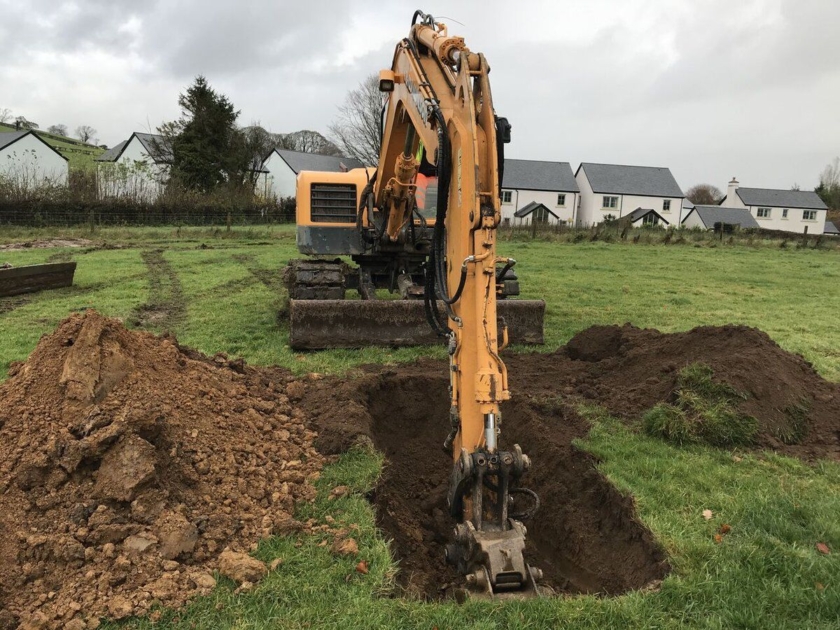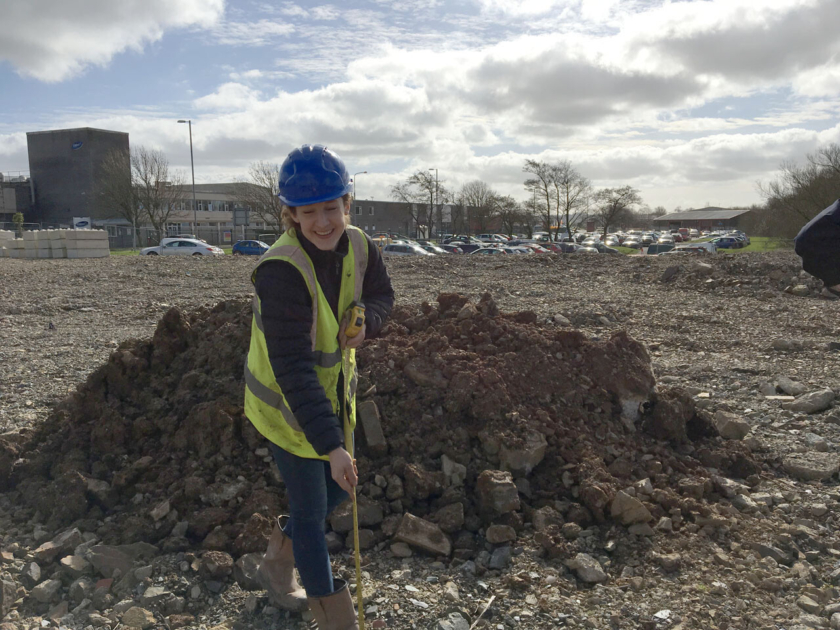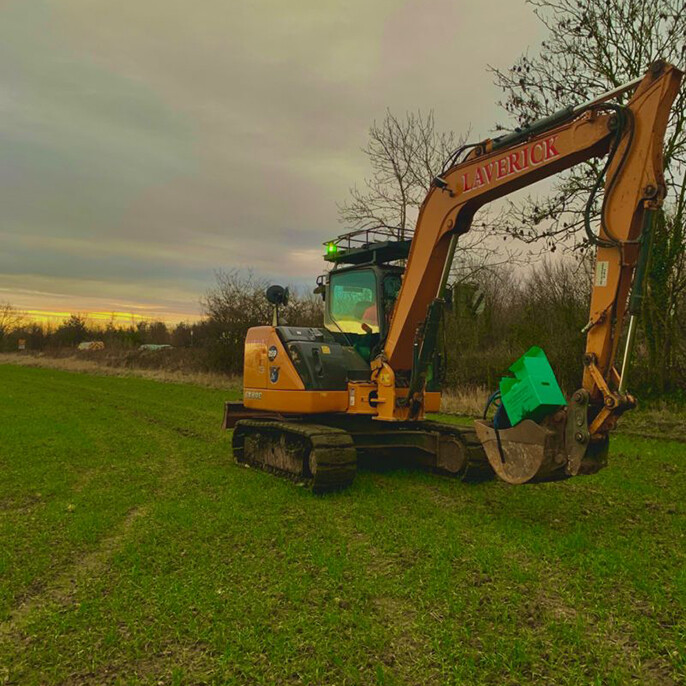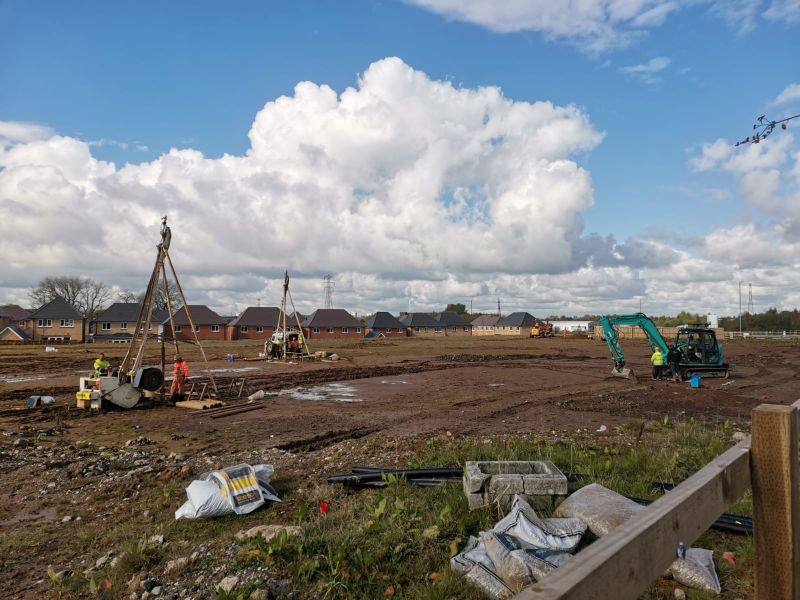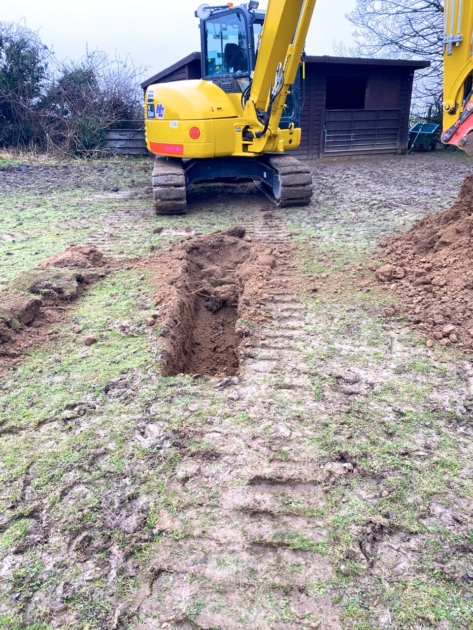More Information on Site Investigations.
What Is the Site Investigation Process?
Site investigations are carried out with a phased approach
- Phase 1 Desk Study
- Phase 2 Intrusive Site Investigation
- Phase 3 Post Site Investigations
- Phase 4 Site Investigations Report
Step 1 – Complete the Phase I Desk Study and site walkover.
A Phase 1 Desk Study is a preliminary risk assessment report for a development site, often required for planning application approval.
Ideally, a Desk Study should also be accompanied by a walk over a survey conducted by an experienced practitioner. By compiling available information in relation to a site’s environmental, geological, hydrogeological, hydrological and mining setting, a cost-effective and focussed site investigation will be developed.
A Phase 1 Desk Study should always precede any ground investigation.Using the interpretive report to highlight potential development issues, environmental and cost liabilities requiring further investigation.
Step 2 – Phase 2 Intrusive Site Investigation
A Phase 2 assessment consists of an Intrusive Site investigation with quantitative risk assessment. The Phase 1 Desk Study will highlight the areas for further investigation and define the scope of these works. Any potential pollutant linkages can then be prioritised for investigation and depending on the Phase 1 Desk study report the appropriate investigation techniques utilised.
Site Investigation Intrusive Techniques Examples:
- Cable Percussive Boreholes
- Window Sample Drilling
- Deep Window Sample Borehole
- Rock Coring
- Rotary Boreholes
- Rotary Core Drilling
- Dynamic Probing
- Trial Pits
- Trenches
- Windowless Sampling Rig
- Soakaway Testing
- Modular windowless sampling drilling rig
- Plate bearing testing
- California bearing ratio (CBR) testing
Step 3 – Post Site Investigations
Once the preliminary site investigations have been completed the results are analysed. If further site investigations are required these can be completed by our multi-disciplined team. These could include:
- Environmental Monitoring
- Soil Testing
- Geotechnical Monitoring
- Slope Stability Assessment
- Radon Monitoring
- Remediation Designs
- Gas protection measures.
Step 4 – Site Investigation Report
An interpretive report will then be compiled from all the information and data gathered from the ground investigations, testing, monitoring for the site.
Our Earth Environmental & Geotechnical consultants can discuss the details of the report and provide further services as required
What are Trial Pits used for?
Trial pits are used to determine the ground conditions as part of the site investigation.
Trial Pits are a site investigation technique used to assess the ground conditions, soil profiles and ground water conditions on a site where construction or development is planned. Trial pits are dug before the construction starts. They allow a large volume of the ground to be inspected and tested in-situ including: hand shear vane, soakaway and CBR testing. Trial pits, also known as Trial trenches,Trial Holes, and test pits, can be excavated relatively quickly and are often used at the beginning of the site investigation process to explore shallow ground conditions. There are two methods of excavating Trial Pits which can be machine excavated or hand dug.
Earth Environmental & Geotechnical offer Trial Pitting throughout the UK as part of their Geotechnical and Environmental Site Investigations Services. If you would like to discuss your development site call our Head Office on Tel: 0161 975 6088
What are Trial Pits used for?
Trial pits are used to determine the ground conditions as part of the site investigation.
Before any construction project starts, the ground conditions and soil composition must be understood to determine whether the proposed construction is feasible and if specific foundation designs are required.
Trial pitting can be useful to investigate buried structures, variable ground conditions and soil profiles over a site. Trial pits are used when the ground is stable and can stand unsupported. Trial holes are frequently used to examine large sample areas to view the strata and determine if further investigations are required.
Trial pitting enables many different samples (both disturbed and undisturbed) to be taken, and various sampling methods to be facilitated these may include, Contamination tests, Vane Shear tests, Infiltration/ soakaway tests, and CBR testing (in accordance with the guidance as set out in BRE 365) and in-situ strength testing.
Trial pits are used for a wide variety of site investigations including:
- Foundation Designs
- Contamination Analysis
- WAC Testing
- Soakaways
Trial pits can be more cost-effective than boreholes, but they cannot reach the same depth and can cause significantly more surface disturbance.
For more information on Trial Pits please click here, or for further Site Investigation Services.
Earth Environmental & Geotechnical offer Trial Pitting throughout the UK as part of their Geotechnical and Environmental Site Investigations Services. Before any site investigations commence it is important to understand your development site’s ground conditions and what Ground Investigation techniques are most appropriate.
Earth Environmental & Geotechnical provide an extensive range of site investigation services
Call now to discuss your development site.


